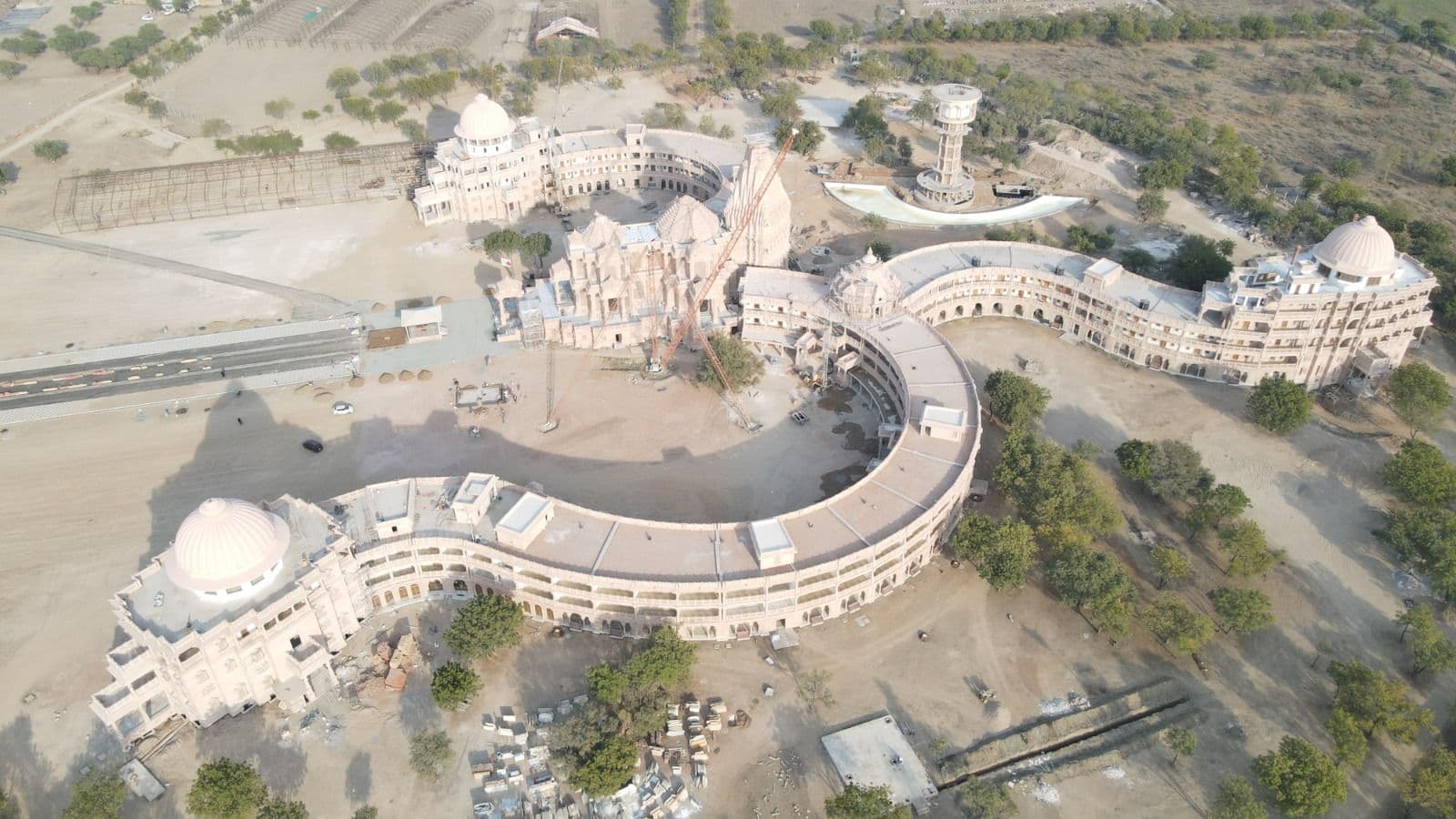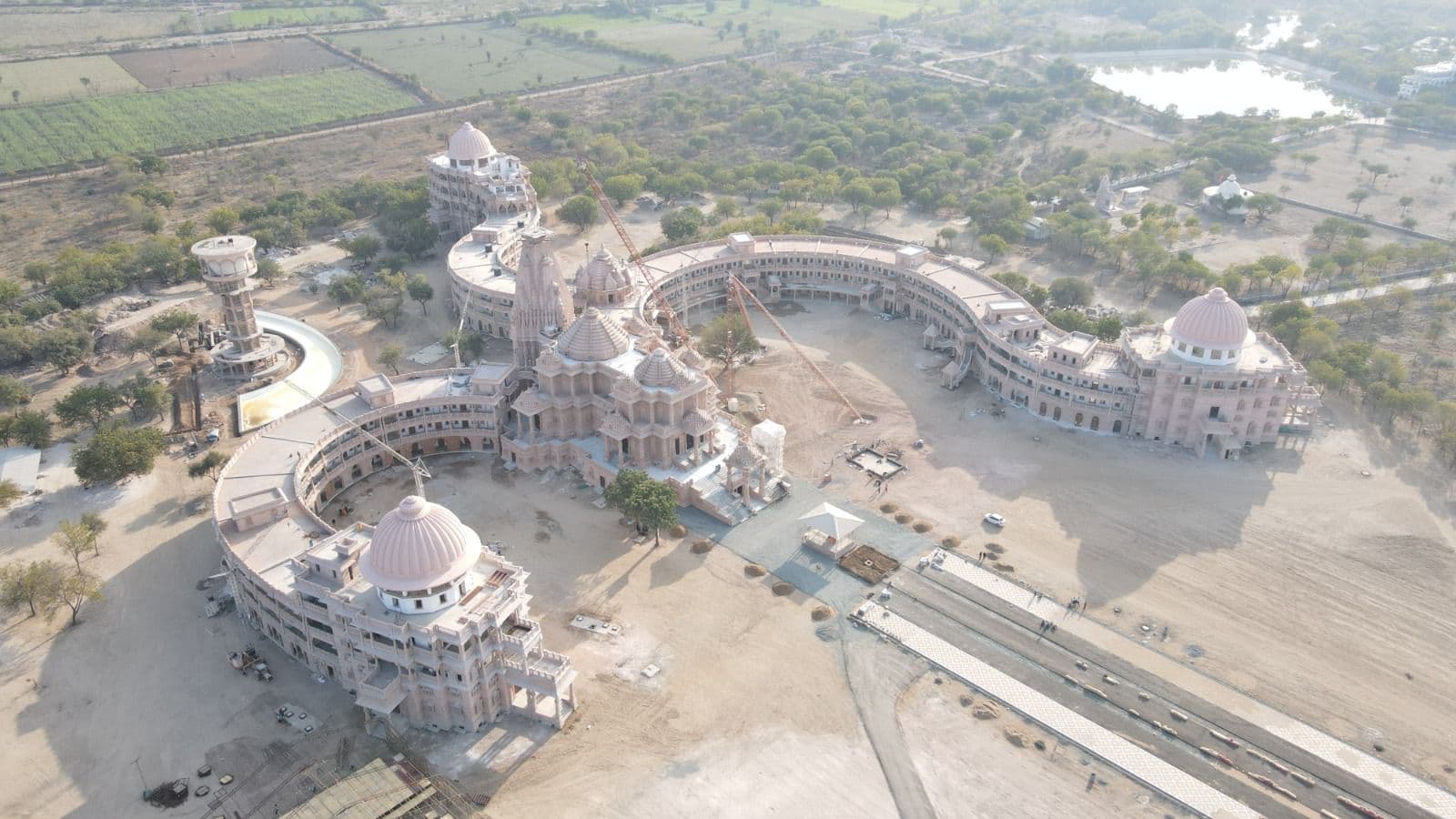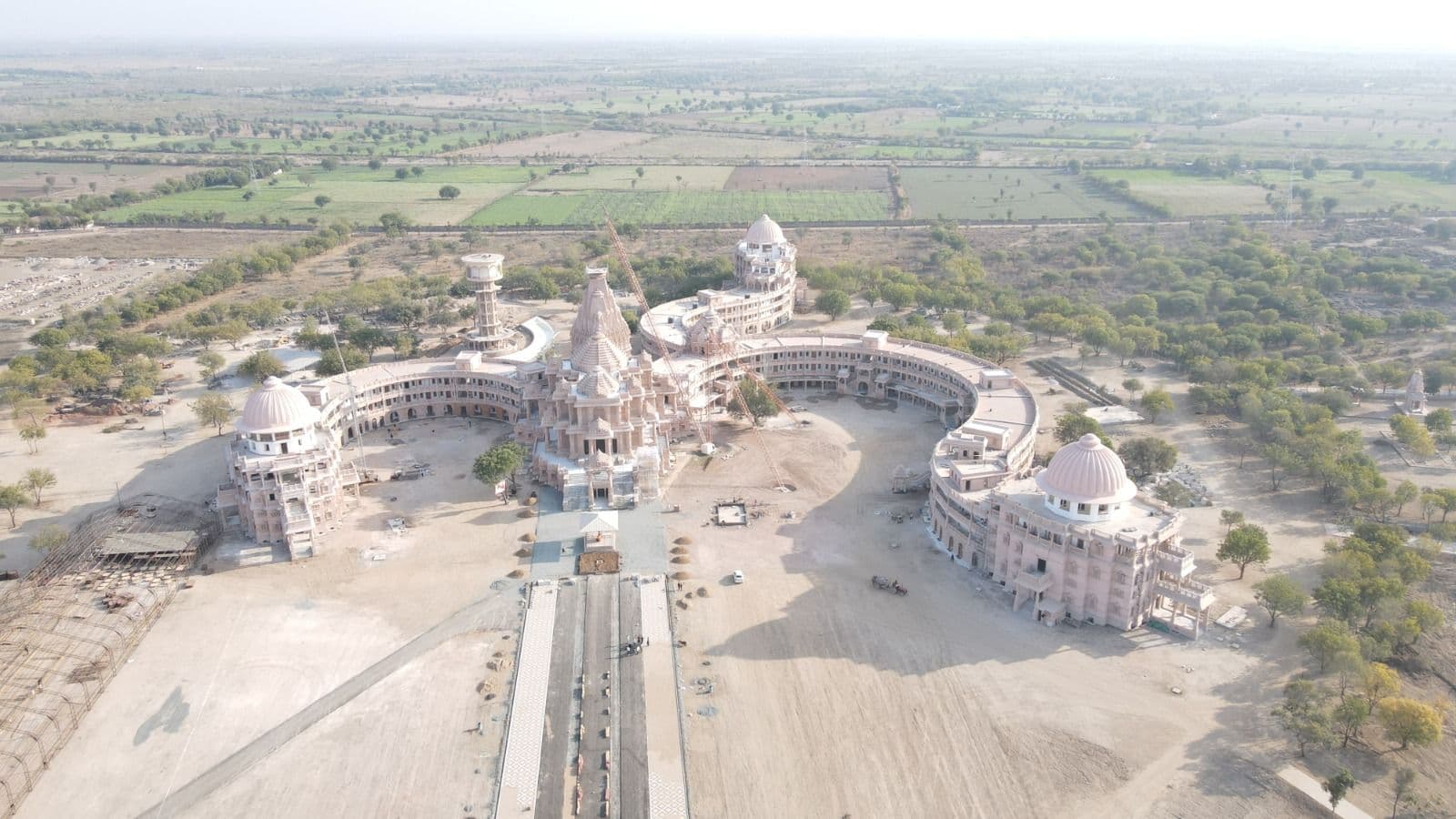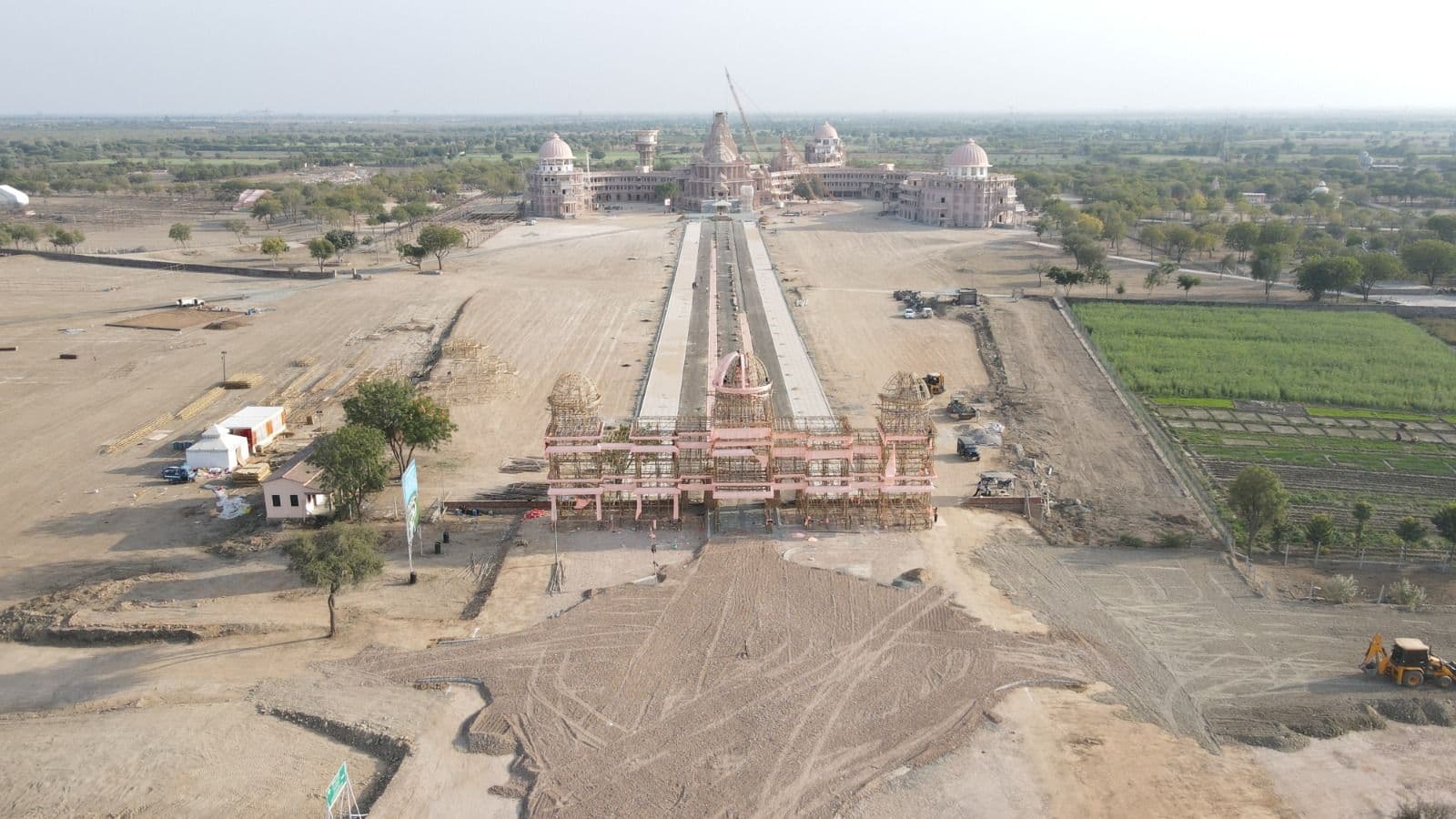
Om Ashram is getting ready
From 10 to 19 February 2024, yagyas, Shiva Mahapuran and various other programs, will take place on the premises of Om Ashram.
The final opening will happen in the morning hours on 19th February 2024!!

The Mandukya Upanishad, a profound philosophical text embedded within the Vedic scriptures, expounds upon the significance of OM – a sacred sound symbolising the ultimate reality or consciousness. This ancient syllable, often considered the essence of the universe, holds immense importance in Hindu philosophy and spiritual practices.

At its core, OM encompasses the triad of sounds – A, U, and M – which represent the three states of consciousness: waking, dreaming, and deep sleep. The Mandukya Upanishad outlines these aspects, emphasizing their interconnectedness and the transcendent nature of the fourth state, referred to as Turiya. This state represents the absolute, beyond the limitations of the ordinary consciousness.

One of the key teachings of the Mandukya Upanishad is that OM encapsulates the entirety of existence. The sound resonates with the cosmic vibrations that sustain the universe, linking the individual soul (Atman) with the universal consciousness (Brahman). Chanting or meditating on OM is believed to align the practitioner with these cosmic vibrations, fostering a connection to the divine.
Furthermore, the Mandukya Upanishad elucidates the profound symbolism of the letters within AUM. The 'A' sound represents the beginning, creation, and the waking state. The 'U' sound signifies continuity, preservation, and the dreaming state. The 'M' sound symbolises dissolution, destruction, and the state of deep sleep. The silence that follows the chant represents the ineffable Turiya state, denoting the absolute, formless reality.
The regular contemplation of OM is seen as a transformative practice that leads to Self-realisation and spiritual awakening. It serves as a powerful tool for meditation, helping individuals go beyond the fluctuations of the mind and connect with the eternal truth.
Beyond its metaphysical implications, the chanting of OM holds practical benefits for mental well-being. Scientific studies suggest that chanting this sacred sound can induce a state of relaxation, reduce stress, and enhance overall mental clarity. The vibrations produced during chanting are believed to harmonise the mind, body and spirit, fostering a sense of inner peace.
In conclusion, the Mandukya Upanishad imparts profound wisdom through its exploration of the significance of OM. This sacred sound serves as a gateway to understanding the nature of consciousness and its connection to the universal reality. Incorporating the chanting of OM into one's spiritual practice offers a path to self-discovery, inner peace, and a deeper connection with the divine, as elucidated by the ancient teachings of the Mandukya Upanishad.

māṇḍūkyopaniṣat
oṃ bhadraṃ karṇebhiḥ śṛṇuyāma devā bhadraṃ paśyemākṣabhiryajatrāḥ .
sthirairaṅgaistuṣṭuvāṃsastanūbhirvyaśema devahitaṃ yadāyuḥ ..
bhadraṃ no api vātaya manaḥ ..
oṃ śāntiḥ śāntiḥ śāntiḥ .
.. atha māṇḍūkyopaniṣat ..
hariḥ oṃ .
oṃ ityetadakṣaramidagͫ sarvaṃ tasyopavyākhyānaṃ
bhūtaṃ bhavad bhaviṣyaditi sarvamoṅkāra eva
yaccānyat trikālātītaṃ tadapyoṅkāra eva .. 1..
sarvaṃ hyetad brahmāyamātmā brahma so'yamātmā catuṣpāt .. 2..
jāgaritasthāno bahiṣprajñaḥ saptāṅga ekonaviṃśatimukhaḥ
sthūlabhugvaiśvānaraḥ prathamaḥ pādaḥ .. 3..
svapnasthāno'ntaḥprajñaḥ saptāṅga ekonaviṃśatimukhaḥ
praviviktabhuktaijaso dvitīyaḥ pādaḥ .. 4..
yatra supto na kañcana kāmaṃ kāmayate na kañcana svapnaṃ
paśyati tat suṣuptam . suṣuptasthāna ekībhūtaḥ prajñānaghana
evānandamayo hyānandabhuk cetomukhaḥ prājñastṛtīyaḥ pādaḥ .. 5..
eṣa sarveśvaraḥ eṣa sarvajña eṣo'ntaryāmyeṣa yoniḥ sarvasya
prabhavāpyayau hi bhūtānām .. 6..
nāntaḥprajñaṃ na bahiṣprajñaṃ nobhayataḥprajñaṃ na prajñānaghanaṃ
na prajñaṃ nāprajñam . adṛṣṭamavyavahāryamagrāhyamalakṣaṇaṃ
acintyamavyapadeśyamekātmapratyayasāraṃ prapañcopaśamaṃ
śāntaṃ śivamadvaitaṃ caturthaṃ manyante sa ātmā sa vijñeyaḥ .. 7..
so'yamātmādhyakṣaramoṅkāro'dhimātraṃ pādā mātrā mātrāśca pādā
akāra ukāro makāra iti .. 8..
jāgaritasthāno vaiśvānaro'kāraḥ prathamā mātrā''pterādimattvād
vā''pnoti ha vai sarvān kāmānādiśca bhavati ya evaṃ veda .. 9..
svapnasthānastaijasa ukāro dvitīyā mātrotkarṣāt
ubhayatvādvotkarṣati ha vai jñānasantatiṃ samānaśca bhavati
nāsyābrahmavitkule bhavati ya evaṃ veda .. 10..
suṣuptasthānaḥ prājño makārastṛtīyā mātrā miterapītervā
minoti ha vā idaṃ sarvamapītiśca bhavati ya evaṃ veda .. 11..
amātraścaturtho'vyavahāryaḥ prapañcopaśamaḥ śivo'dvaita
evamoṅkāra ātmaiva saṃviśatyātmanā''tmānaṃ ya evaṃ veda .. 12..
.. iti māṇḍūkyopaniṣat samāptā ..




